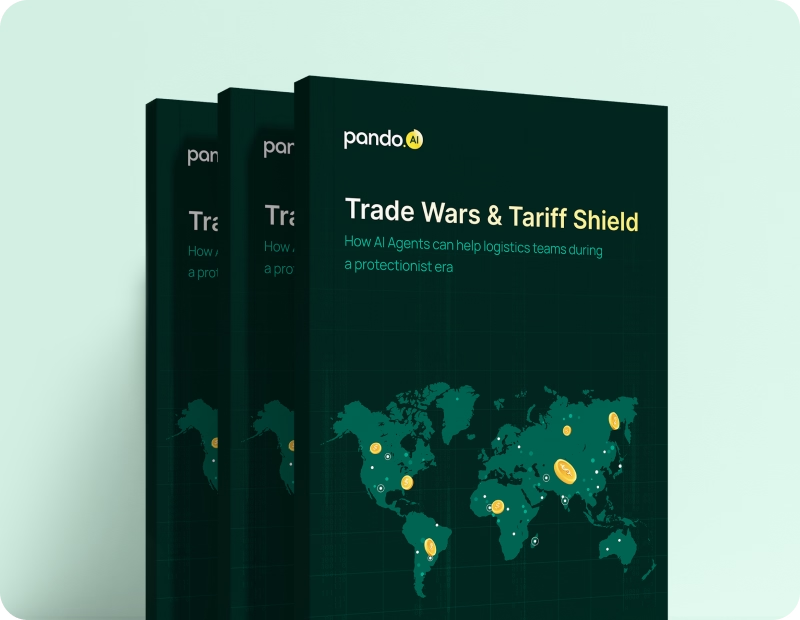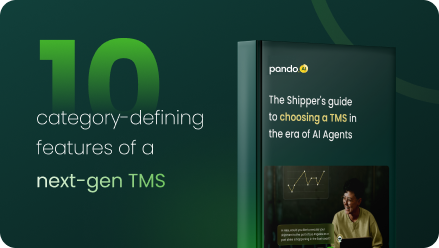Meet Pi – Your AI Transportation Expert
Pi can manage your transportation planning & execution to deliver a compelling customer experience
Trusted by global manufacturers, retailers, and distributors
Pi autonomizes transportation management
Dynamic Capacity Planning
Generates transportation plans with optimal capacity
Pi analyzes historical shipment data, real-time traffic conditions, and upcoming demand forecasts to recommend optimal fleet deployment and proactively identify potential capacity bottlenecks. Pi can also proactively generate transportation orders based on future transportation needs.

Reduce empty miles
Consolidates loads and optimizes routes for each dispatch
Pi analyzes order details, fleet requirements, and delivery time windows to consolidate loads, optimize route plans, and select the right carriers to create efficient dispatch plans. Pi can also consider backhaul movements to reduce empty miles.

Improve Placement efficiency
Tenders with carriers to confirm placement
Pi collaborates with qualified carriers in real-time to factor in their cost, service levels, and capacity to place freight tenders and confirm booking. Pi can interact with carriers in natural language to facilitate seamless collaboration autonomously.

Minimize documentation burden
Manages and audits transportation documentation
Pi efficiently manages transportation documentation for both domestic and international shipments, ensuring compliance and minimizing delays. This includes customs declaration, export/import permits, and other trade compliance documents. Pi can also validate document accuracy or proactively alert missing information to reduce the risk of penalties and facilitate the timely movement of goods across borders.

Take proactive actions
Tracks real-time visibility & manages exceptions
Pi tracks real-time visibility into the status of both domestic and international shipments against pre-defined milestones, thereby proactively planning downstream logistics. Pi can also proactively manage exceptions around potential delays or disruptions.
Transportation Metrics
Generates reports & transportation insights
Pi analyzes KPIs such as on-time delivery rates, transportation cost per mile, and carrier performance metrics to generate customized reports to help visualize trends and identify areas of improvement.
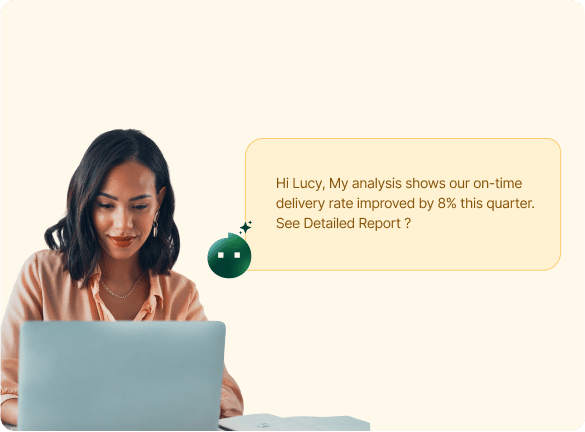
Sustainability Reporting
Calculates GLEC-compliant emission analytics
Pi collects and aggregates emission data based on shipment data, calculates emissions aligned to the GLEC framework, and generates comprehensive reporting on sustainability metrics for internal and external stakeholders.

Real Value, Real Fast.
Pi delivers quantifiable value with significant business impact in transportation management.
Savings in freight cost
Improvement in customer SLAs
Reduction in carbon footprint
Autonomous collaboration with carriers
Getting started with Pi
- Your enterprise data
- Supply chain knowledge graph
- Logistics Language Models™
- Onboarding Pi
- Use cases & decisions
- Pilot & scale
Your enterprise data
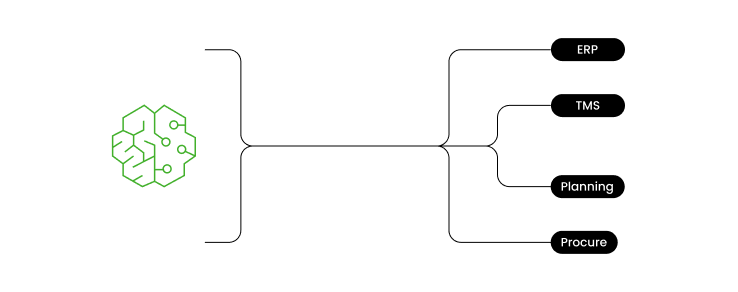
Pando’s underlying technology platform seamlessly integrates with your internal enterprise systems such as ERP, TMS, planning/procurement solutions, and more.
Supply chain knowledge graph

Pando creates a normalized supply chain knowledge graph that includes real-time data across your products, suppliers, customers, shipments, carriers, freight contracts, and more.
Logistics Language Models™

Pando’s proprietary Logistics Language Models™ (LLMs) are trained on this normalized supply chain knowledge graph along with external market insights.
Onboarding Pi
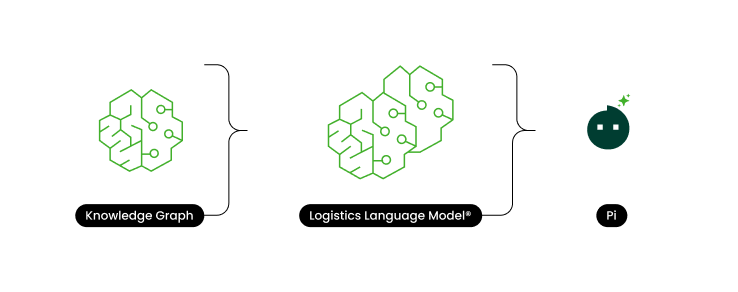
Pando’s suite of AI agents is built and onboarded on the foundation of these AI models to bring deep logistics expertise and broad AI capabilities to your organizational context.
Use cases & decisions
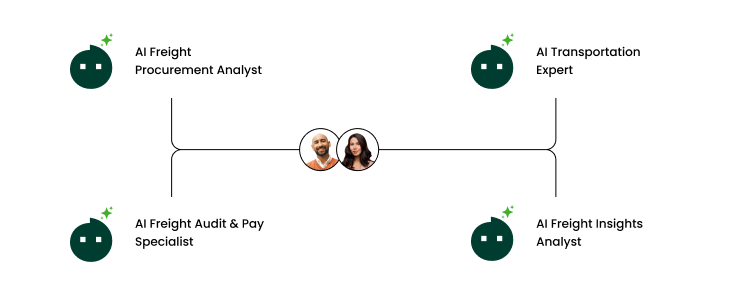
Specific use cases across simple to complex tasks are identified with decision flows and guardrails in alignment with your business objectives and decision impact.
Pilot & scale

Pi is onboarded with a human in the loop for decision and action validation. With increasing trust and confidence, Pi can scale from co-piloting to auto-piloting decisions across use cases.
Pando has become a key partner for us.
Through their integration of advanced AI technology, logistics expertise, and top-tier talent, Pando has become a key partner for us. Their solutions streamline our freight procurement to payment processes, driving meaningful changes in our supply chain toward greater agility and sustainability. Congratulations to the Pando team for their well-deserved recognition!
We're proud to be a Pando customer!
We needed a unified platform to collaborate with our vendors seamlessly, derive intelligence from our network, plug into our evolving IT landscape, scale with our business, and provide rapid value realization and Pando checked all our boxes. We're proud to be a Pando customer!

Christopher Held
Chief Supply Chain Officer
Pando drives greater impact.
Pando's platform provides the end-to-end freight spend visibility, real-time analytics, predictive intelligence and collaborative automation through its AI tools, to optimize our logistics operations. These AI tools complement our supply chain team, so they are able to do more and have a greater impact than before!
Pando gives us a competitive edge.
Our partnership has boosted visibility in ocean freight, improved rate management, and delivered cost savings. Pando enhances customer experience and strengthens collaboration across our supply chain, giving us a competitive edge.
Discover insights & best practices
Recommended by global consulting & technology companies
FAQs - AI agents in logistics
What are AI Agents? How are they different from Cloud software?
AI agents represent the next evolution in logistics technology. While traditional cloud software follows fixed rules and requires manual input, AI agents like Pi work as intelligent digital team members who understand context and communicate naturally. Pi, for example, can interpret complex logistics scenarios, learn from historical data, and make autonomous decisions. In freight procurement, Pi understands RFQ requirements, evaluates carrier responses, and negotiates rates - tasks that traditional software would need extensive human intervention to accomplish. The key difference lies in adaptability: Pi learns from every interaction, refining its understanding of your organization's unique processes and preferences over time.
Why are AI Agents important in logistics today?
The logistics industry faces unprecedented challenges - from skilled workforce shortages to increasingly complex global supply chains. AI agents address these challenges by bringing round-the-clock operational capability and sophisticated decision-making to logistics teams. Pi demonstrates this by processing vast amounts of data from multiple sources, identifying patterns, and making informed decisions faster than the norm. In transportation management, AI agents like Pi analyzes real-time traffic conditions, weather patterns, and carrier capacity to optimize routing decisions. Its importance extends beyond automation - Pi serves as a collaborative partner that augments human expertise, enabling teams to focus on strategic initiatives while ensuring operational excellence.
How can AI agents help logistics teams? What are some use-cases?
AI agents transform logistics operations across the entire procure-to-pay cycle. Pi showcases this versatility through multiple roles. In freight procurement, Pi manages the entire RFQ process, from identifying lanes for bidding to negotiating with carriers and finalizing contracts. For transportation management, Pi handles complex tasks like capacity planning, route optimization, and real-time shipment tracking. In freight audit and payment, Pi validates invoices against contracts, processes payments across multiple currencies, and manages cost allocation. Pi also provides deep analytical insights, monitoring carrier performance, tracking sustainability metrics, and identifying cost optimization opportunities. What makes Pi particularly valuable is its ability to handle these tasks autonomously while escalating only critical decisions that require human oversight.
What is the underlying technology platform powering AI agents?
The power of AI agents comes from sophisticated technology platforms that combine multiple advanced capabilities. AI agents specialized in logistics operations like Pi operate on a foundation that includes a supply chain knowledge graph, normalizing and connecting data from various enterprise systems. This is enhanced by specialized AI models that understand industry-specific terminology and contexts. Pi integrates seamlessly with existing enterprise systems like ERPs, TMS, and procurement solutions, ensuring data flows smoothly across the organization. Advanced decision intelligence capabilities enable Pi to learn from every interaction, continuously improving its ability to make accurate, contextual decisions aligned with business objectives.
How can I train and onboard AI agent in logistics?
Onboarding Pi follows a strategic process that ensures successful integration with your logistics operations. It begins with connecting your enterprise systems to create a comprehensive data foundation. Pi then builds a deep understanding of your organization's unique processes, workflows, and decision patterns. Specific use cases are identified based on your business priorities, from simple task automation to complex decision-making scenarios. Decision guardrails are established to ensure Pi operates within defined parameters. The implementation typically starts with a pilot phase where Pi works alongside human teams, building trust and validating its decision-making capabilities. As confidence grows, Pi's autonomy can be gradually increased across more use cases and decisions.


